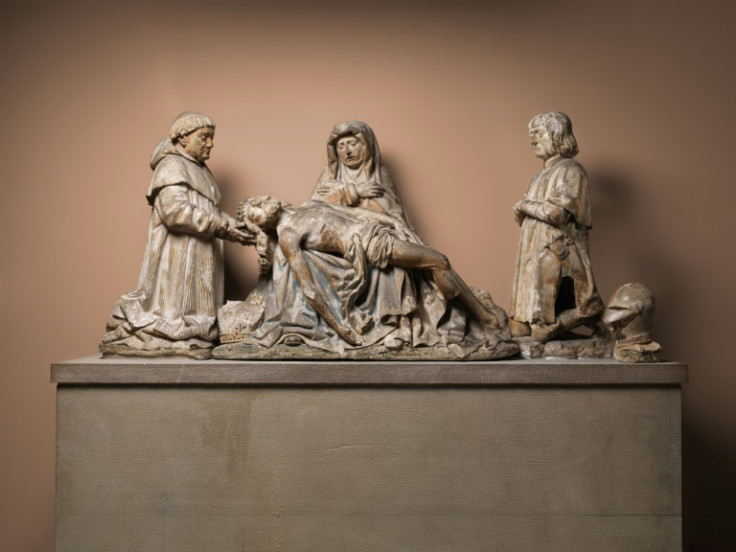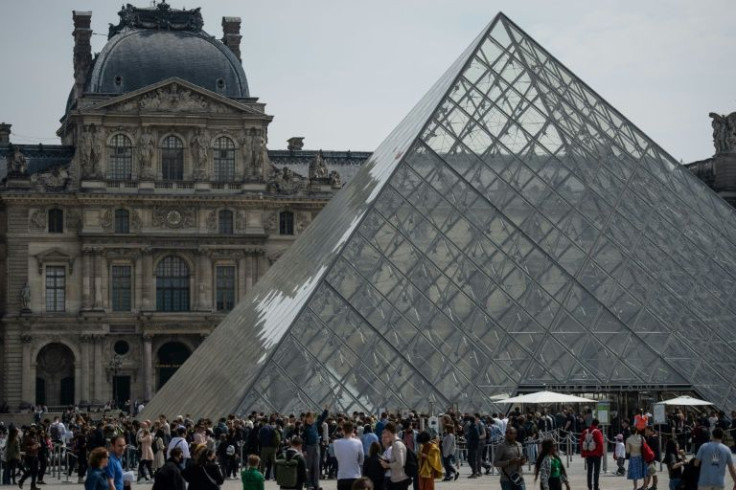
Embark on a journey with us through enchanting museums, where contemporary design intertwines with timeless grace. From the sinuous lines of the Guggenheim Bilbao to the avant-garde vision of the ArtScience Museum in Singapore, these architectural marvels seamlessly merge with their environments, mesmerizing visitors with their visionary forms. Delve into the harmonious convergence of art and architecture at these awe-inspiring galleries, where each perspective unveils a fresh glimpse of creativity and splendor.
These architectural gems transcend mere repositories of knowledge; they are symphonies of artistry in their own right. From the bold, avant-garde creations of Frank Gehry to the elegantly sustainable designs of Moshe Safdie, each museum tells a story through its architecture, inviting visitors to embark on a journey of discovery and wonder.
As we marvel at the fusion of art, architecture, and innovation, we are reminded of the profound influence these cultural sanctuaries wield in shaping our perception of the world. Within their walls, we encounter inspiration, introspection, and a jubilant homage to human ingenuity -- a testament to the enduring allure of beauty in our modern era.
10.
State Hermitage Museum, Saint Petersburg
The State Hermitage Museum in Saint Petersburg, Russia, is a renowned institution of art and culture, established in 1764 when Empress Catherine the Great acquired a collection of paintings from the Berlin merchant Johann Ernst Gotzkowsky. The name "Hermitage" derives from the dwelling of a hermit or recluse, reflecting its origins as a retreat for Catherine's personal collection. Initially housed in the "Small Hermitage," the museum now encompasses multiple buildings on the Palace Embankment and its surroundings, including the "Old Hermitage," "New Hermitage," "Hermitage Theatre," and the iconic "Winter Palace," the former main residence of the Russian tsars. Exhibitions at the State Hermitage Museum feature over 3 million artifacts spanning antiquity, Western Europe, the Middle East, Russia, and various epochs, countries, and regions. Established in 1764 with Catherine the Great's acquisition of a significant collection of Western European paintings, it showcases masterpieces by Leonardo da Vinci, Raphael, Titian, Rembrandt, Rubens, Matisse, and Picasso. The museum also boasts the world's finest collection of Holland Baroque and French paintings from the 19th and 20th centuries, as well as Western European decorative arts and ancient Greek jewelry. Additionally, it hosts the unique "Gold of the Scythes" exhibition.
9.
The Metropolitan Museum of Art, New York City

The museum, among the world's largest, houses over two million works across 17 curatorial departments. Initially a Gothic-Revival-style building, it has vastly expanded since its inception, with additions dating back to 1888 now encompassing the original structure. With a collection spanning 5,000 years, it showcases diverse art, architecture, and artifacts from across the globe, including medieval Europe, American and modern art, European masterpieces, classical antiquity, ancient Egypt, and a plethora of African, Asian, Oceanian, Byzantine, and Islamic artworks.
8.
Louvre Museum, Paris

Nestled along the banks of the Seine, the Louvre Louvre Museum embodies the timeless essence of artistic expression. Its expansive structure, steeped in centuries of history, has weathered the tides of war and peace, a testament to its enduring resilience. Adorned with a gleaming central pyramid and holding the distinction of being the largest art museum globally, the Louvre has rightfully earned its place as one of Paris' most cherished landmarks. The Louvre Museum is a prestigious national art institution boasting an impressive collection of Western masterpieces. Among its treasures is Leonardo da Vinci's iconic "Mona Lisa," renowned worldwide. With a staggering display of 38,000 artworks, the Louvre stands as a beacon of artistic heritage.
7.
Museum of Astronomy, Shanghai
Shanghai Museum of Astronomy, the world's largest of its kind, nestled within a vast green expanse in Shanghai, China, opening in 2021. Designed by Ennead Architects, this monumental museum boasts a design devoid of straight lines or right angles, echoing the intricate geometry of the universe and the dynamic motions of celestial bodies. Its fluid form offers visitors an immersive encounter with genuine astronomical phenomena, as winding architectural ribbons adorn the facade and arcing pathways emulate the gravitational pull, guiding visitors towards key features such as the central atrium, entry point, and planetarium theater.
Acting as functional astronomical instruments, the museum and its three principal architectural elements – the oculus, inverted dome, and sphere – track the movements of the sun, moon, and stars. One notable feature is the inverted dome, a large glass structure atop the central atrium, affording visitors an unobstructed view of the sky from within.
6.
ArtScience Museum, Singapore
The ArtScience Museum, located within Marina Bay Sands in Singapore's Downtown Core, showcases major exhibitions blending art, science, culture, and technology. Designed by Moshe Safdie, its lotus flower-inspired architecture features a round base and ten extensions resembling "fingers." Each finger houses gallery spaces with skylights for sustainable illumination. Rainwater is collected and directed down the center of the building, cascading through its bowl-shaped roof into a reflecting pond at the lowest level and recycled for restroom use.
With gallery spaces totaling 50,000 square feet, the museum exhibits combined art/science, media/technology, and design/architecture themes. Permanent displays include objects like Leonardo da Vinci's Flying Machine, a Kongming Lantern, and high-tech robotic fish, reflecting achievements across the arts and sciences.
5.
The Broad, Los Angeles
The contemporary art museum, located on Grand Avenue in Downtown Los Angeles, is named after philanthropists Eli and Edythe Broad, who funded the $140 million building to house their art collections. Adjacent to the Walt Disney Concert Hall, another iconic Gehry building, it was designed by architecture firm Diller Scofidio and Renfro to contrast with its surroundings, featuring a bright metallic perforated exterior inspired by the concept of 'the veil and the vault'. This design allows filtered daylight into indoor spaces while grounding the museum's architecture with a cool concrete core.
The museum houses nearly 2,000 pieces of contemporary art by 200 artists, including works by Cindy Sherman, Jeff Koons, Ed Ruscha, Roy Lichtenstein, and Andy Warhol, including Warhol's "Single Elvis" from 1963, whose acquisition in 2015 sent pop art prices soaring.
4.
Neue Nationalgalerie (New National Gallery), Berlin
The Neue Nationalgalerie, a museum for modern art in Berlin's Kulturforum, focuses on 20th-century art as part of the National Gallery of the Berlin State Museums. Designed by Ludwig Mies van der Rohe, it opened in 1968 with underground display space. The upper story, totaling 2,683 m2, serves as the entrance hall and main special exhibit gallery, making a bold architectural statement. The lower story, totaling about 10,000 m2, houses the permanent collection.The museum's ceiling, a grid of black-painted steel beams, has been used for installations like Jenny Holzer's LCD displays.
The collection showcases 20th-century art, with strong representation in Cubism, Expressionism, Bauhaus, and Surrealism. Permanently installed sculptures include works by Eduardo Chillida, Joannis Avramidis, and George Rickey, while pieces from Auguste Renoir to Ulrich Ruckriem adorn the museum's garden.
3.
Museo Soumaya, Mexico City
Museo Soumaya, a private non-profit cultural institution in Mexico City, comprises two buildings: Plaza Carso and Plaza Loreto. Named after Soumaya Domit, wife of founder Carlos Slim, the museum's striking silver facade, adorned with thousands of hexagons, is a standout architectural marvel.
Housing over 66,000 artworks spanning 30 centuries, it boasts sculptures from Pre-Hispanic Mesoamerica, Mexican art from the 19th and 20th centuries, and a comprehensive collection of European old masters and modern western art, including pieces by Auguste Rodin, Salvador Dalí, Bartolomé Esteban Murillo and Tintoretto. The museum holds the largest collection of casts of sculptures by Auguste Rodin outside France. It features European art rarely exhibited in Latin America before. With a focus on European works from the 15th to the 20th centuries, the museum also holds Mexican art, religious relics, historical documents, and coins, including the world's largest collection of pre-Hispanic and colonial era coins.
2.
Guggenheim Museum, Bilbao, Spain
Designed by Canadian American architect Frank Gehry, the Guggenheim Museum in the port city of Bilbao is a groundbreaking example of 20th-century architecture. Spanning 24,000 m2, with 9,000 dedicated to exhibition space, the museum represents an architectural landmark. Gehry's design creates a spectacular sculpture-like structure seamlessly integrated into Bilbao's urban landscape. The building's three levels are organized around a central atrium and connected by curved walkways, titanium and glass elevators, and staircases. The interior space, focused on the atrium, primarily showcases modern and contemporary art, including massive sculptures.
The museum features 250 contemporary works of art, including both permanent and visiting exhibits by Spanish and international artists, making it one of the largest museums in Spain. A standout highlight of the collection is its only permanent exhibit, "The Matter of Time," which incorporates an earlier work, "Snake." This series of weathering steel sculptures was designed by the renowned contemporary artist Richard Serra.
1.
Louis Vuitton Foundation, Paris
The French art museum and cultural center, sponsored by LVMH and its subsidiaries, operates as a nonprofit entity under LVMH's promotion of arts and culture. Designed by American architect Frank Gehry, the Deconstructivist building draws inspiration from the glass Grand Palais and structures like the Palmarium. Comprising 11 galleries totaling 41,441 square feet, a 350-seat auditorium, and multilevel roof terraces, the two-story structure was constrained by the footprint and volume of a previous bowling alley, necessitating a predominantly glass construction. The resulting sailboat-inspired design features glass sails enclosing the "iceberg," hosting galleries illuminated by recessed or partially hidden skylights.
The museum's collection, believed to be a collaboration of works owned by LVMH and Bernard Arnault, features pieces by Jean-Michel Basquiat, Gilbert & George, and Jeff Koons. Under the curatorship of Francesca Pietropaolo, the foundation has commissioned site-specific installations by artists such as Ellsworth Kelly, Olafur Eliasson, Janet Cardiff and George Bures Miller (featuring Scott Tixier and Tony Tixier), Sarah Morris, Taryn Simon, Cerith Wyn Evans, and Adrián Villar Rojas.
Galleries of grandeur
The world's beautiful museums stand as testament to the transcendent power of human creativity and imagination. From the daring architectural feats that redefine city skylines to the serene minimalist designs that evoke a sense of timeless elegance, these cultural institutions inspire awe and wonder in all who visit. Beyond their role as guardians of art and history, these museums serve as beacons of inspiration, inviting us to explore the boundless possibilities of the human spirit. As we reflect on their beauty and significance, we are reminded of the profound impact they have on shaping our understanding of the world and enriching our lives with beauty, knowledge, and meaning.







